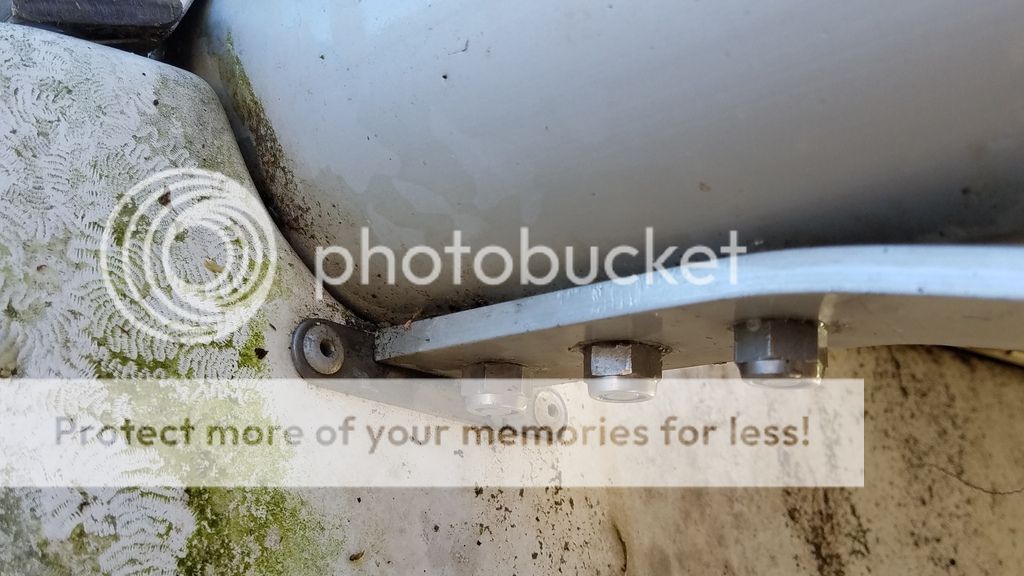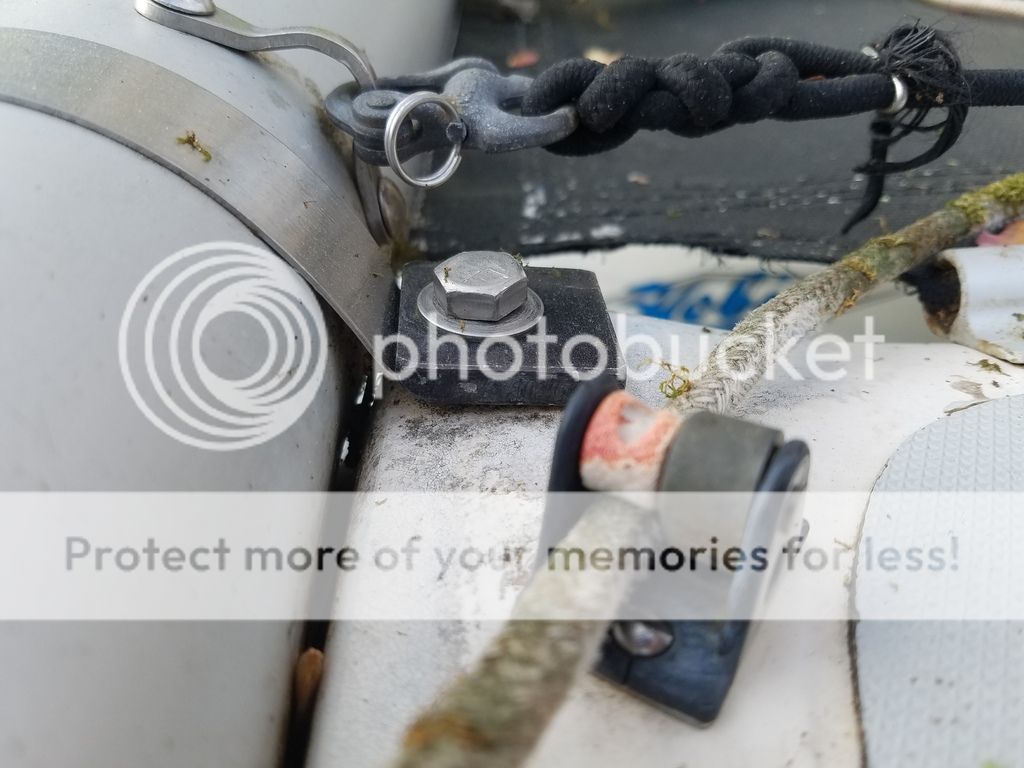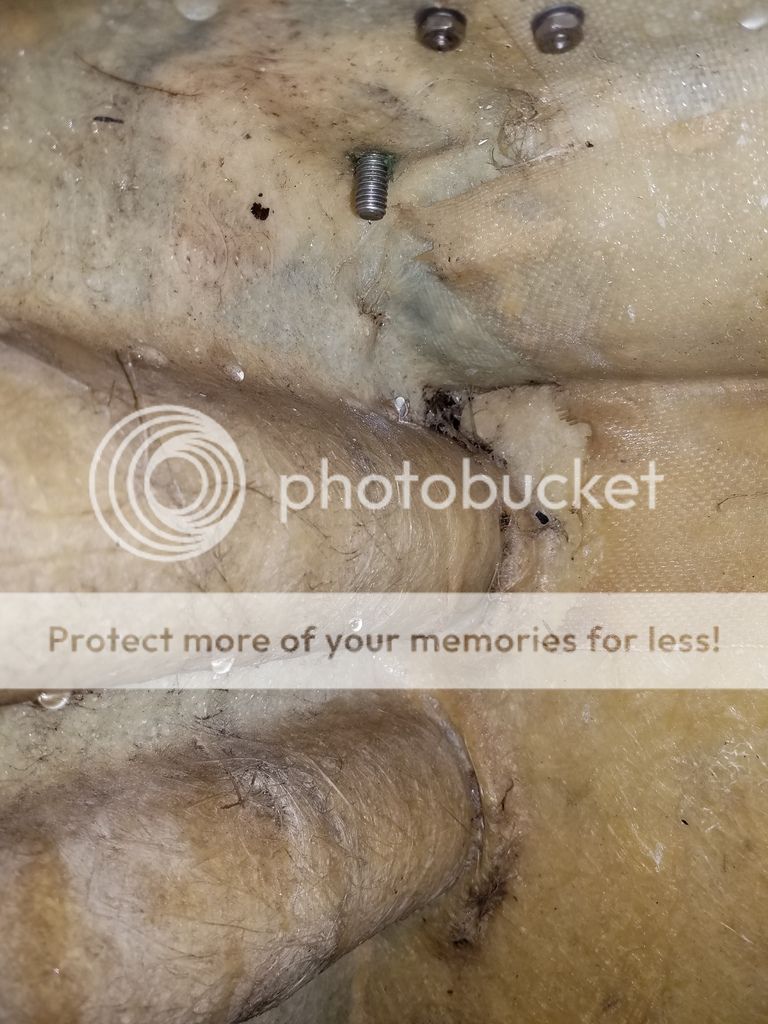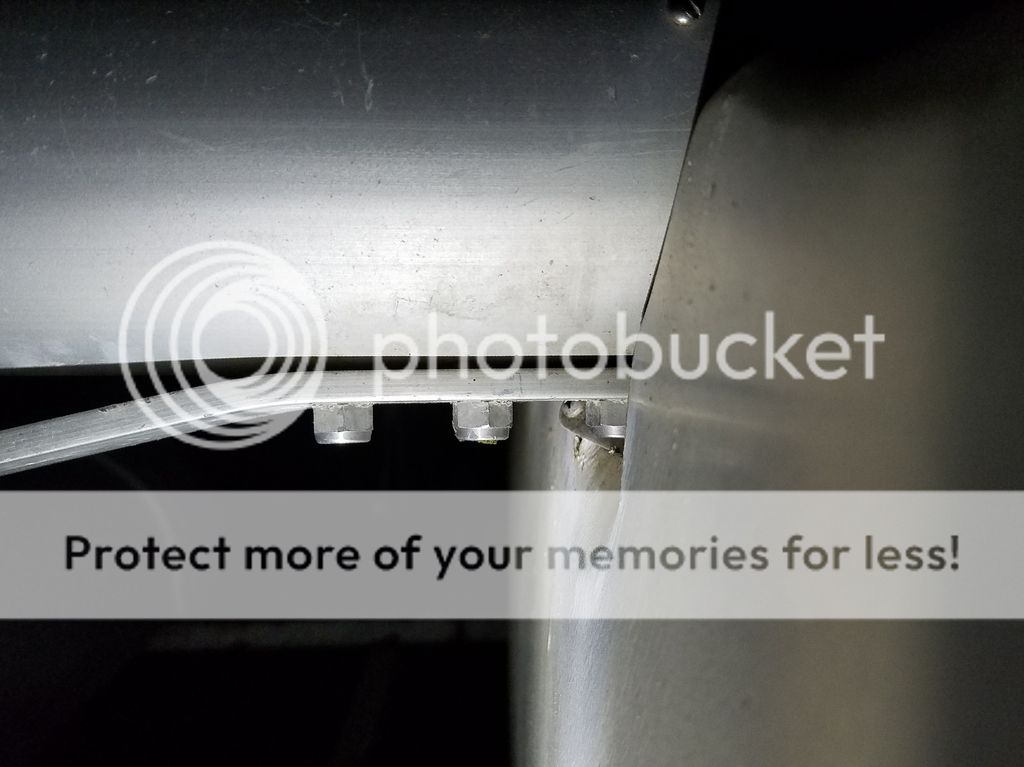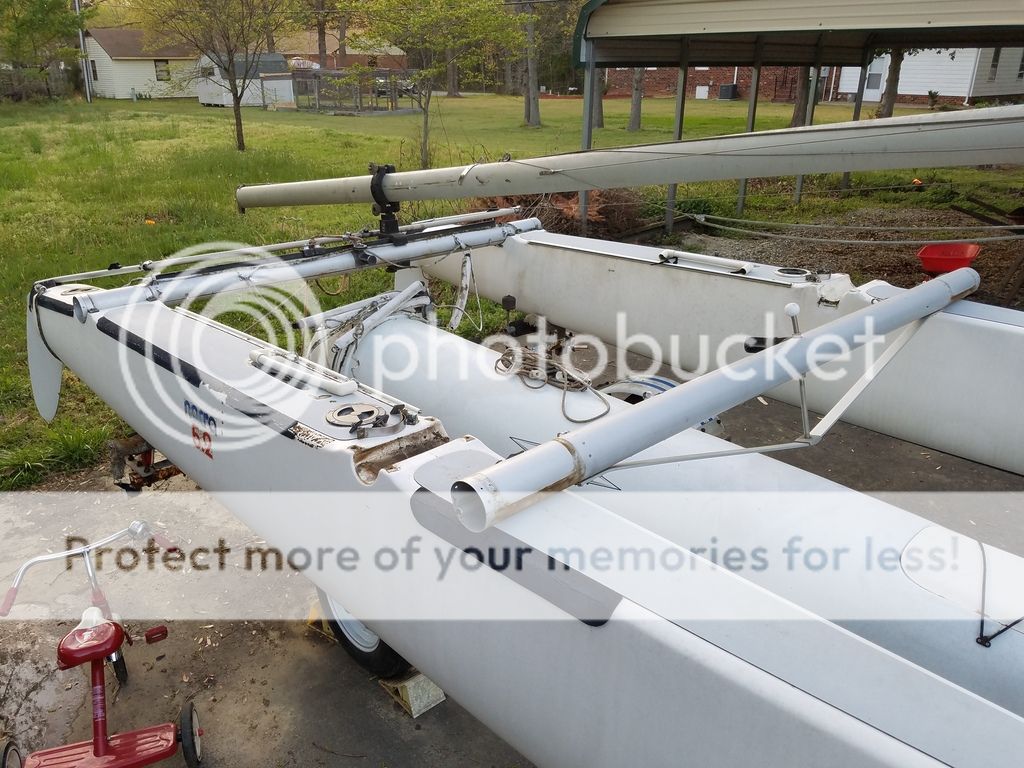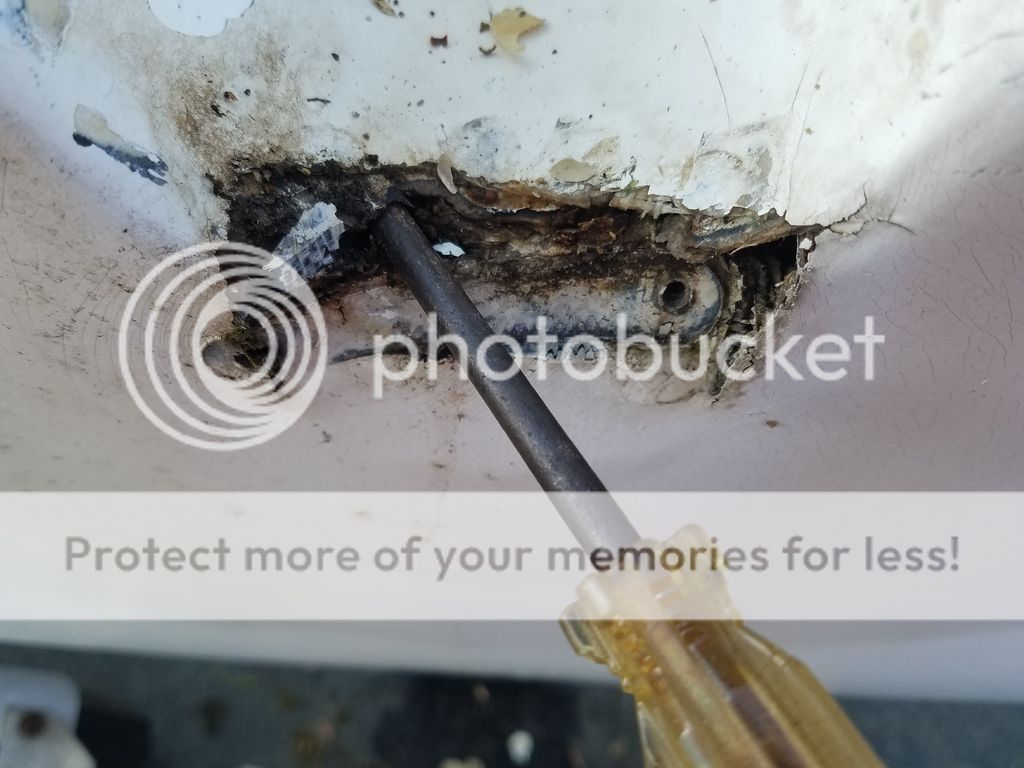Your second post, the cracks in the gel-cote. forget about them, they are a non issue, I have quite a few in my 5.7. It's only Gel-cote. They are not structural & not worth fixing.
1st photos-the Beam. I disagree with DMG, I don't believe that beam is compressed. You can see the tramp track has not been flattened down. It is only the end dinged. It looks like the boat may have been blown over, or stored on its side, or banged on both ends. If the beam bolts are not frozen(more common in saltwater boats), you can remove the beam & take it to a muffler shop. They have tube "expander" tools & can probably push the ding out. Or you can prop the beam appropriately, with a hardwood block underneath & piece of pipe inside, then hammer it out to a fairly true shape. I see no deformation other than at the end, I'd use them. If you have funds, Dan Berger can probably find you a used beam for not much money.
DMG's photo of the 2 or 3 monel or SS rivets in the beam strap is a good one, & quite a common thing that people did when they removed the fore/aft tube. (Some people like the tube as it makes for a good foot brace when the hull comes up).
I would look at the straps, if the hole is visibly elongated, source some used ones. However, they look OK. These are not a known fail item, I don't think I've ever heard of one failing. On both our Nacras, (and 2 junked 5.2's) some of the straps suck down to the hull, some don't. Look at the photos in the various albums, lots of them are down to the hulls. It is important to orient that little chip correctly,(read the manual) your picture looks like they are 90* off. They are also missing the little rubber plate that goes between the chip & the hull-that alone will lift the chip off the hull. I was missing a couple on the 5.0, we just folded a piece of bicycle inner tube so as to have 2 layers of rubber under the chip-while we waited for a factory part. That was 5 years ago, inner tube still there, still works. Don't go crazy on torquing them down, the spec is only 18ft lbs, that's not a lot.
The only bad thing is where that metal tab is pushed into the hull, that has to be fixed. Compare the two. The broken one has been repaired before. Notice how it has 2 phillips screws vs 2 AL rivets?
Take the beam off, remove that tang. Then get inside the hull & push it out to where it should be.(I'm hoping there is an access port you can use) An angle grinder will quickly remove the broken material, then reglass with lots of cloth. It's an easy job, search fibreglass repair, or get somebody from the local boat club to help, there has to be some friendly cat sailors in your area. I would remove the hull, so I could lay it on it's side, then gravity is your friend. pull a couple of AL pop rivets to hold it in place once your done, or if you build up the hull & it's to thick, a couple of SS machine screws with locking nuts & Loctite. The fasteners only hold the tang in place.
There is no backing inside the hull to hold that tang, look at my album here, it's a '79 ish 5.2 I think
there is a phoot where that tang attaches;
https://www.thebeachcats.…d2cca105cec1b9873b004e12
Then go sailing, wait til fall to make it look prettier. Go out in light conditions til you get some experience. Put some side loaders on those boards, or at least tie a line to the handles, so if you flip & they fall out you won't lose them-they sink like a rock!
I think that boat is very useable, barring any other unseen items.
Lastly, sand that edge on the mast a little better, where it got dinged. It still looks like the edge has no radius.
--
Hobie 18 Magnum
Dart 15
Mystere 6.0XL Sold Was a handful solo
Nacra 5.7
Nacra 5.0
Bombardier Invitation (Now officially DEAD)
Various other Dock cluttering WaterCrap
--




